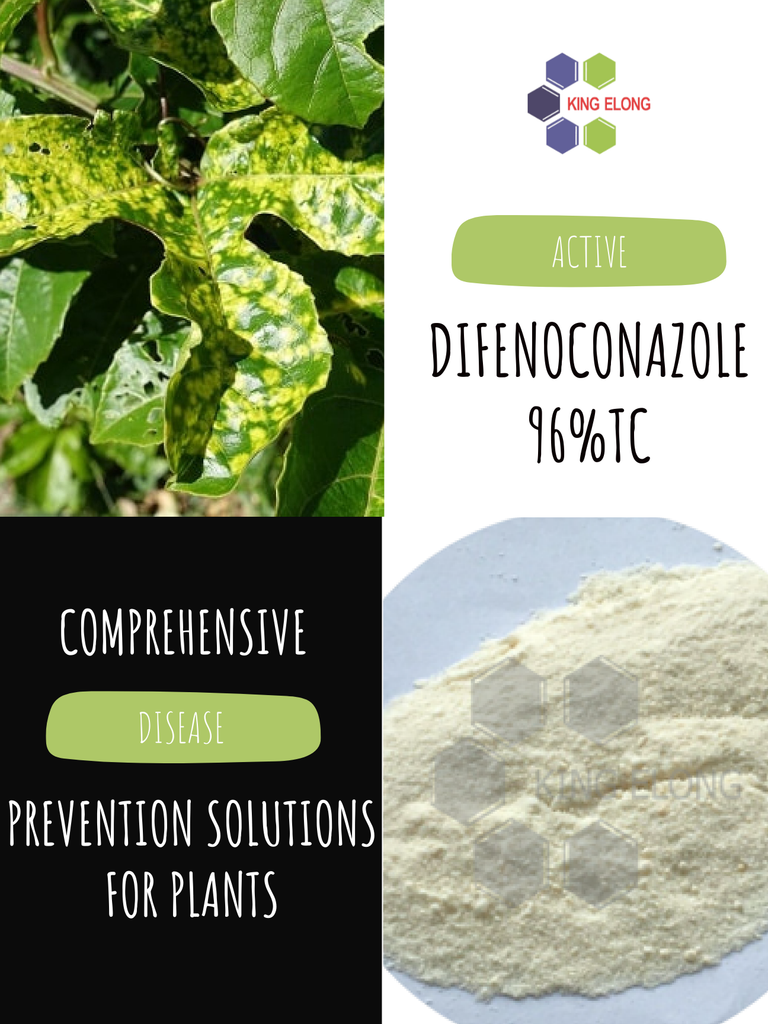
Difenoconazole 96% TC - Comprehensive disease prevention solutions for plants
- Author: Đinh Hằng at
- Specialized news
Active ingredient name: Difenoconazole
Formula: C19H17Cl2N3O3
Chemical name: 1 – [[2- [2-chloro-4- (4-chlorophenoxy) phenyl] -4-methyl-1,3-dioxolan-2-yl] methyl] -1,2,4-triazole
Chemical property
- Technical pesticide in white crystalline form, soluble in acetone, toluene, and ethylic. Flashpoint > 63°C.
- Toxic group III, oral LD50 1,453 mg/kg, dermal LD50 2,010 mg/kg. Relatively toxic to fish, and slightly toxic to bees. Quarantine time is 7 days.
- Fungicides, internal respiratory effects.
- Wide spectrum of effects, preventing many fungi belonging to the class of cysts, bacilli, and imperfect fungi for many types of plants.
1. Origin
- Difenoconazole is a broad-spectrum fungicide in the Triazole group. Thanks to its wide range of activity, the active ingredient Difenoconazole can protect crop quality and yield if used properly in spraying fungicides on leaves or treating seeds before planting.
- Difenoconazole is often used as a spray or seed treatment to prevent and treat fungal diseases such as Ascomycetes, Deuteromycetes, or Basidiomycetes,... appearing in many types of plants such as potatoes, fruit trees, and vegetables, leaves, grains, flowers, ornamental plants,...
2. Mechanism of action
- Difenoconazole affects harmful fungi by interfering with the biosynthesis of ergosterol by inhibiting the formation of 14α-demethylation of sterol, thereby changing the morphology and function of fungal cell membranes, leading to hindering its development.
- Difenoconazole is a fungicide with systemic. When sprayed on plants, the active ingredient Difenoconazole will interfere with disease-causing fungal cells and change their morphology and function. Therefore, Difenoconazole can easily prevent the growth of pathogenic fungi.
3. Application
- The active ingredient Difenoconazole has a wide spectrum of effects, preventing many fungi belonging to the class of cysts, bacilli, and imperfect fungi that cause diseases such as leaf spots, rust, anthracnose, scab, powdery mildew... for many types of plants.
4. Note
- Extremely effective in treating fungal diseases if sprayed early in the early stages of the disease on plants.
- Can be mixed to treat fungus with most other pesticides and fungicides such as Azoxystrobin, Propiconazole, Tebuconazole, and so on.
- Do not use products containing copper. In cases where mixing is required, it is necessary to increase the dose of the active ingredient Difenoconazole to more than 10% and provide sufficient water consumption during the spraying process to be effective.
- Do not use the active ingredient Difenoconazole more than 3 times per crop.
- Toxic to animals, aquatic plants, and predatory insects.

